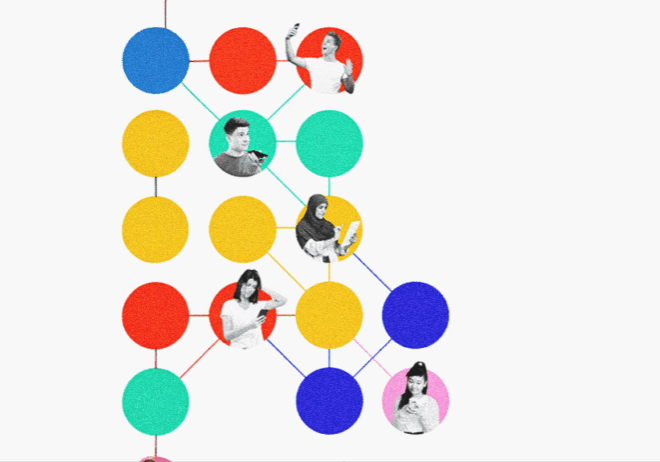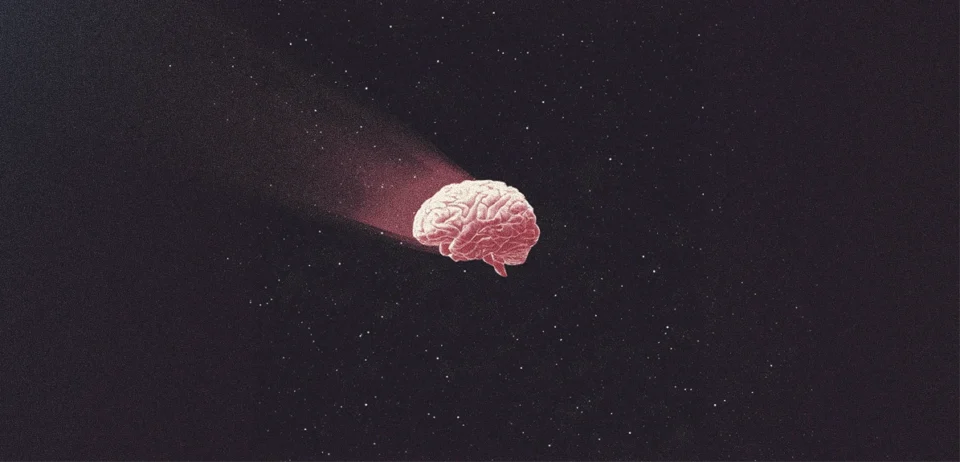
Cognitive Diversity: The Secret to Risky and Bold Ideas
What happens in a meeting room where every idea gets a yes, every sentence ends in agreement, and no one ever says, “Wait, what if we flipped it?” It’s quiet. Too quiet. Like a jazz band where everyone plays the same note. Sounds safe, right? But safe doesn’t spark anything. When minds mirror each other, you don’t innovate—you echo. Sounds relatable??
Bold innovation requires tension in addition to talent in a society that promotes originality but penalizes failure. Friction is necessary. Cognitive variety is necessary.
Cognitive diversity isn’t just a buzzword; it’s the secret engine behind boundary-pushing ideas. It brings together different ways of thinking, solving, and seeing the world—and when harnessed right, it doesn’t just generate ideas; it dares to risk the unexpected and empowers the bold ones.
Let’s understand what cognitive diversity is: where bravery and creativity meet magically
Forget the usual demographics for a second. Cognitive diversity goes deeper than race, gender, or background. It refers to differences in perspective, thinking styles, problem-solving approaches, and mental models.
It is a combination of the analytical and the intuitive, the cautious and the daring, the rule-abiding and the boundary-pushing. Sitting at the same table as the designer, who sketches concepts in a jumble, is the data scientist, who constructs reasoning from patterns.
Why creativity needs conflict (The good kind)
Let’s be real—creativity isn’t always comfortable. Disagreement, discussion, or the audacious statement, “What if we turned this on its head?” are frequently the seeds of great ideas. Innovation stops when everyone agrees too readily. But when there’s healthy friction, something surprising happens: people stop playing it safe.
In cognitively diverse teams, that kind of friction becomes fuel. One person questions the obvious. Another imagines an unexpected route. A third sees the risk—and still says, “Let’s go.” It’s the chemistry of contrast that drives bold momentum. Disagreement doesn’t derail the process—it sharpens it, forces clarity, and challenges assumptions in all the right ways.
A 2025 study by Wang & Duan found that generationally and cognitively diverse teams—when guided by shared leadership—significantly outperformed homogenous groups in innovation performance. How differently they thought—and how safely they could debate each other—was more important than just who was present.
Case in point: Pixar’s Braintrust model
Pixar’s legendary “Braintrust” is a perfect example of cognitive diversity at work. Each film goes through a rigorous feedback loop involving directors, writers, artists, and editors—all with wildly different mindsets.
They don’t just give polite notes. They challenge, critique, rip apart, and rebuild over and over. This cross-pollination of minds helped shape movies like Inside Out and Coco, both of which dared to dive into abstract emotional terrain rarely explored in animated films.
Creative risk, in Pixar’s world, isn’t optional. It’s the standard, and cognitive diversity makes it possible.
Why sameness feels safe (but stunts innovation)
In traditional work cultures, there’s often an unspoken rule: Don’t rock the boat. We hire people who “fit.” We reward the familiar. But that comfort zone is a creative trap.
Workflows may be streamlined by sameness, but creativity is flatlined. When everyone believes the same, it’s easier to agree, but it’s more difficult to take risks. Avoiding risk instead of embracing it becomes the norm.
On the flip side, cognitive diversity introduces productive discomfort. It forces people to consider ideas outside their echo chamber. It’s messier, yes—but mess is where magic lives.
Creative risk needs all kinds of thinkers
Want a team that sparks the next viral campaign or breakthrough product? Make sure it’s packed with minds that think differently, not just work differently.
- The Systems Thinker: who sees how one small change impacts the whole.
- The Empathizer: who channels the customer’s unspoken needs.
- The Rebel: who asks “Why not?” instead of just “Why?”
- The Realist: who grounds big ideas in doable plans.
- The Data Devotee: who finds patterns others overlook.
Even though these minds don’t always agree, when they work together, they produce something that would be impossible for one individual to do alone.
The risk equation: Courage x Contrast
Creative risk isn’t just about throwing out wild ideas. It’s about smart, strategic courage—the kind that comes from balancing varied inputs. Think of cognitive diversity as a high-quality feedback loop. It helps you:
- Anticipate blind spots
- Refine raw ideas
- Build psychological safety for risk-taking
- Test crazy concepts from multiple angles
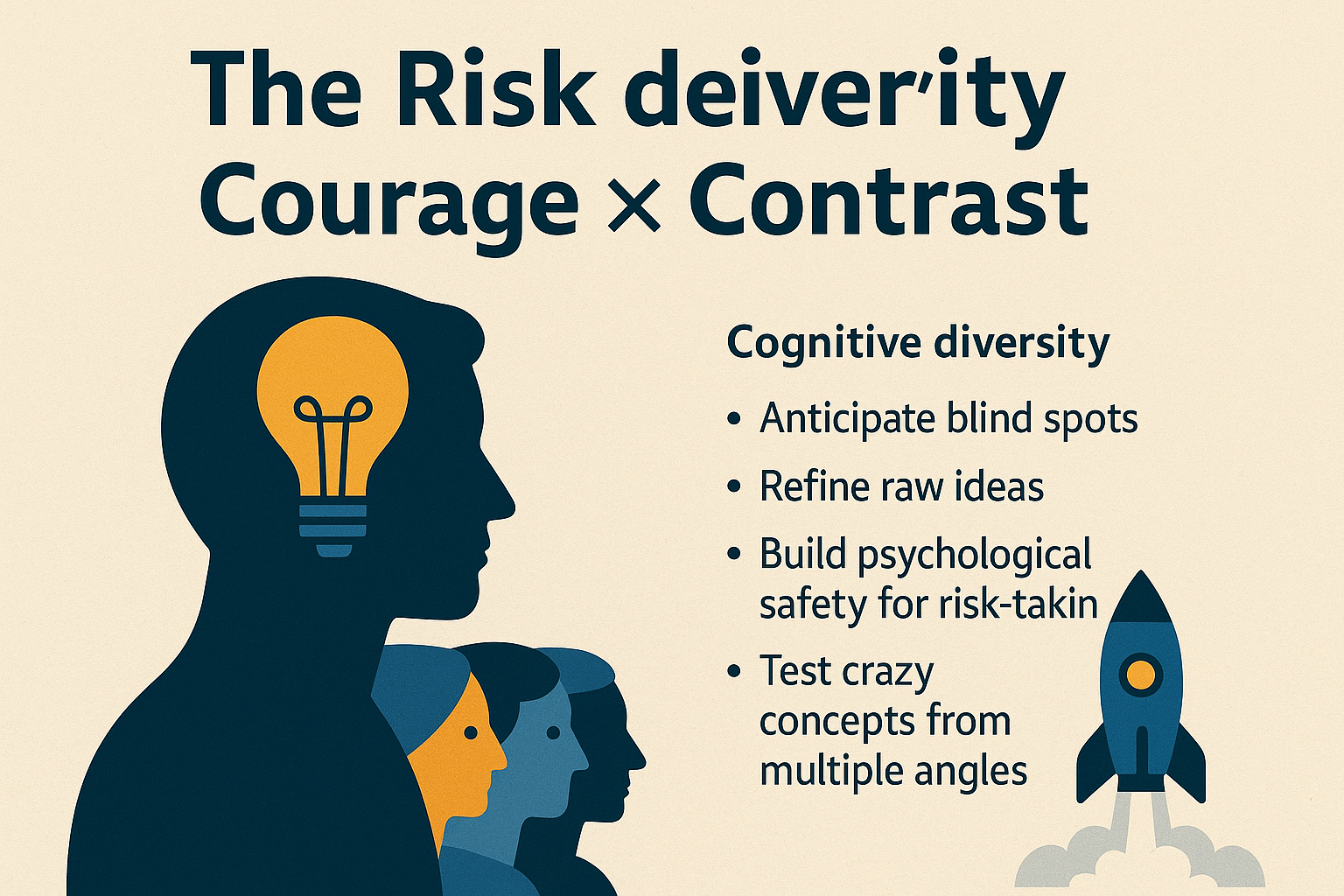
When diverse minds come together, bold ideas feel less risky and more possible. Risk stops being a cliff and starts looking like a launchpad.
From ads to algorithms: Cognitive diversity in action
From viral campaigns to ethical tech, cognitive diversity isn’t just theory—it’s shaping real-world impact. Look at how bold thinking from different minds turns risks into results.
Heinz x Absolut’s Poster Collaboration (2023)
A vodka brand and a ketchup brand walk into a meeting—sounds like a joke, but it resulted in one of the boldest campaigns in recent memory. A mix of culture geeks, visual pun-lovers, and unlikely collaborators made the campaign weird, witty, and unforgettable. That’s cognitive diversity turning brand risk into viral gold.
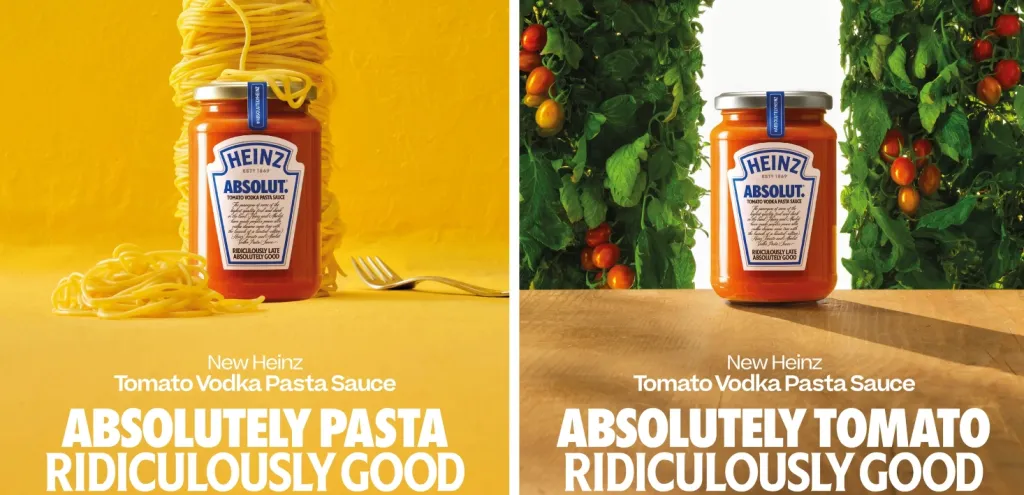
Google’s AI Ethics Council (short-lived, but revealing)
When Google formed an ethics council to oversee AI development, it aimed to bring together varied viewpoints—technologists, philosophers, sociologists. It stumbled, yes—but the attempt highlighted a growing truth: When stakes are high, monoculture thinking won’t cut it.
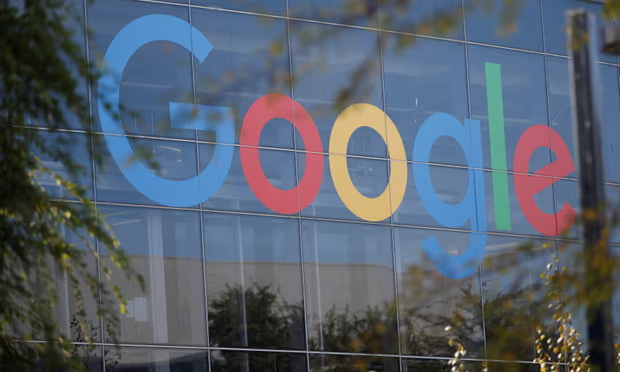
How to build for it: Tips for teams
Cognitive diversity doesn’t happen by accident—it’s something teams must design for, nurture, and protect. Here’s how to create an environment where risk-taking and bold ideas are accepted.
- Hire for Thinking, Not Just Experience: Don’t just look for résumés that mirror the status quo. Ask how someone solves problems, handles ambiguity, and approaches creativity.
- Establish Debate Safe Zones: Promote disagreement. Establish routines, such as weekly “disagree and discuss” meetings, concept hackathons, and leadership rotation during brainstorming sessions.
- Ditch ‘Culture Fit’ for ‘Culture Add’: Instead of hiring people who blend in, seek out those who stretch the team’s thinking.
- Train for Collaboration Across Cognitive Styles: Team members should be taught to communicate in each other’s “thinking language” since understanding one another is essential for co-creation between data and design thinkers.
Cut to the chase
Cognitive diversity is your unfair advantage in a world where safe ideas get scrolled past. It fuels bold thinking, sharper risks, and the kind of creativity that actually makes people stop and feel something. It’s not about shouting louder—it’s about smarter collisions of thought. Ready to light the fuse on something bigger? Build differently.

